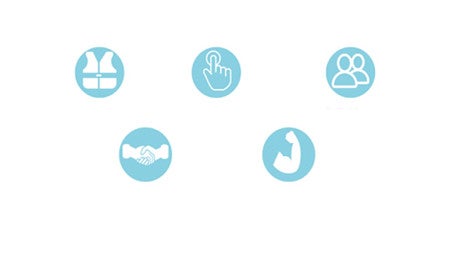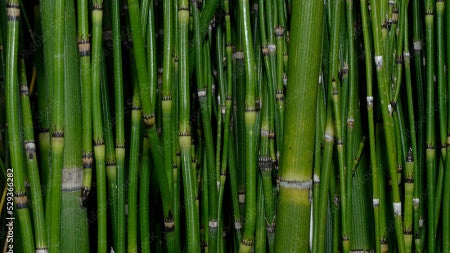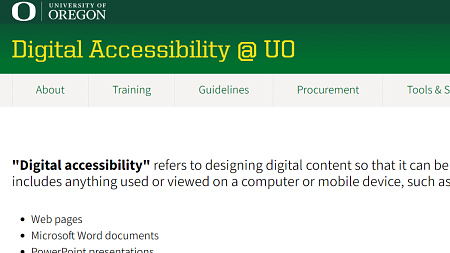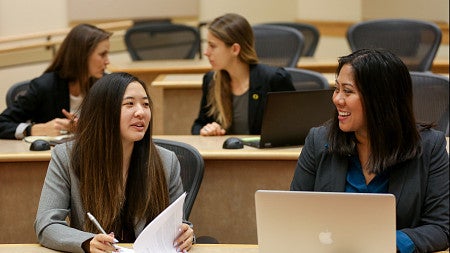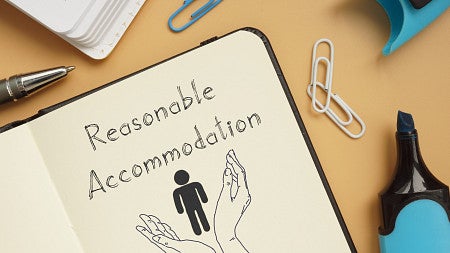- "Accessibility" is used here to indicate whether disabled students are able to access the same information and engage in the same learning experiences as their currently non-disabled peers (Department of Education's Office of Civil Rights, 2013). It is also commonly used as a legal term (for example, in the Americans with Disabilities Act, or ADA), or to indicate standards for built environments (physical or digital).
- "Universal Design" here means both considering a wider range of people who will likely engage with what we are making as we design it (as opposed to relying exclusively on individual accommodations) and a particular approach called Universal Design for Learning (UDL) which offers a set of principles and approaches that can help us ensure all students are able to engage with the learning we are offering.
- "Inclusive" is one of the four standards of quality teaching at UO, and is "instruction designed to ensure every student can participate fully and that their presence and participation is valued" and that "the content of the course reflects the diversity of the field's practitioners and the questions and knowledge they bring." Learn more on the Introduction to Inclusive Teaching page.
In addition, we understand "disability" as a condition that "substantially limits one or more major life activities" (ADA), as situational (we may be disabled in one environment but not in another), and as an important part of diversity and identity. We use a mix of "identity-first" and "person first" language throughout these pages; learn more about disability and language on the APA's "Disability" webpage.


